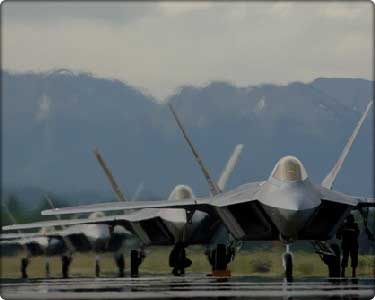The wisdom of the hundreds of billions of dollars spent on creating ever more advanced warplanes has come under even more doubt today, with the announcement that the F-22 fleet is going to be restricted to flights within a close proximity to airfields for the foreseeable future.
 The move is a response to questions over the warplanes’ oxygen systems, concerns which have led pilots to refuse to fly the advanced planes. The exact same concern grounded the entire fleet for several months last year, and nothing was ever resolved.
The move is a response to questions over the warplanes’ oxygen systems, concerns which have led pilots to refuse to fly the advanced planes. The exact same concern grounded the entire fleet for several months last year, and nothing was ever resolved.
Rather, officials seem to have waited for the media furor to quiet down then simply sent the fleet back up. The oxygen systems have reportedly been failing, causing serious breathing problems and in one case even a pilot’s death.
The F-22 program itself cost $66.7 billion, and though officially the “unit cost” is listed as about $150 million, government auditors say that the actual per-unit cost is closer to $400 million. That fact is moot at any rate, since the planes can’t even safely be flown from the factory to an airfield anymore, and all F-22’s are going to have to be removed from Alaska’s air patrol duty. There is speculation that the F-22’s even more expensive successor, the F-35, is going to have the exact same problem.


